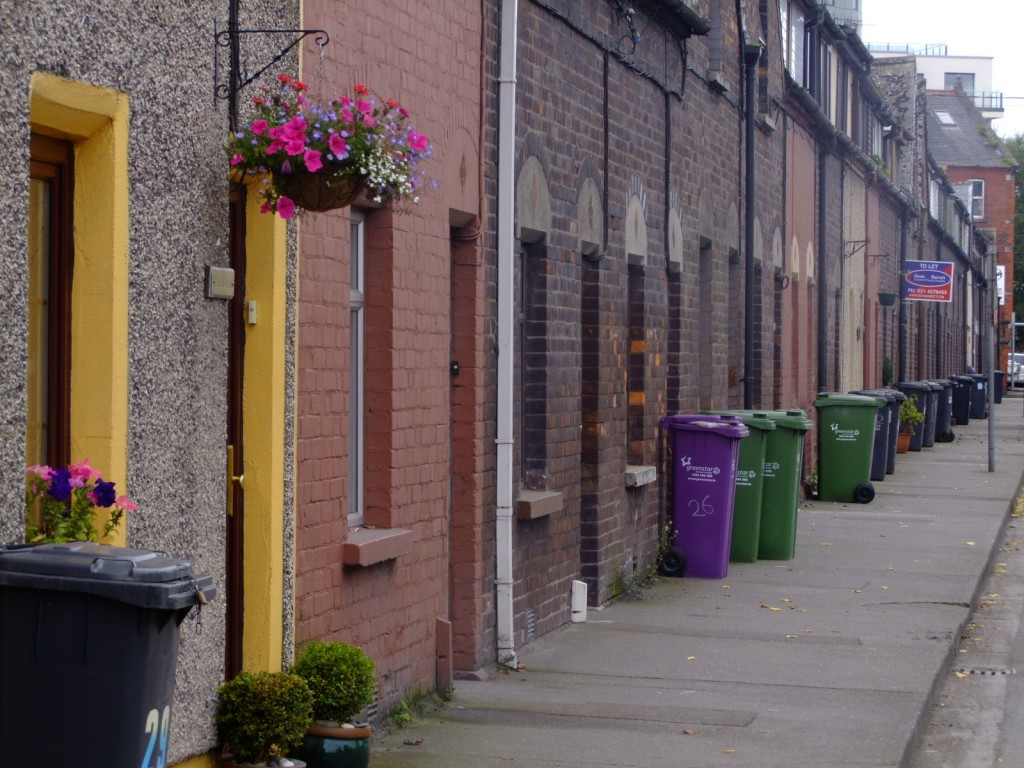Heritage trail pictures, 22 August 2010
for more information or try the trail yourself (well you’ll have to block out the answers!)
http://corkheritage.ie/?page_id=2036






Heritage trail pictures, 22 August 2010
for more information or try the trail yourself (well you’ll have to block out the answers!)
http://corkheritage.ie/?page_id=2036






Check out the census for Ballinlough in 1901! A centre for market gardeners and hard work!
http://www.census.nationalarchives.ie/pages/1901/Cork/Blackrock/Ballinlough/
Also Monday, 23 August, 7pm; “Knights, Quarries and Suburban Growth: A historical walking tour through Ballinlough and environs”, start point: Ballinlough Pitch and Putt car park, opp. Pairc Ui Rinn, Cork, duration: 1 ½ hours
Ballinlough, c.1885
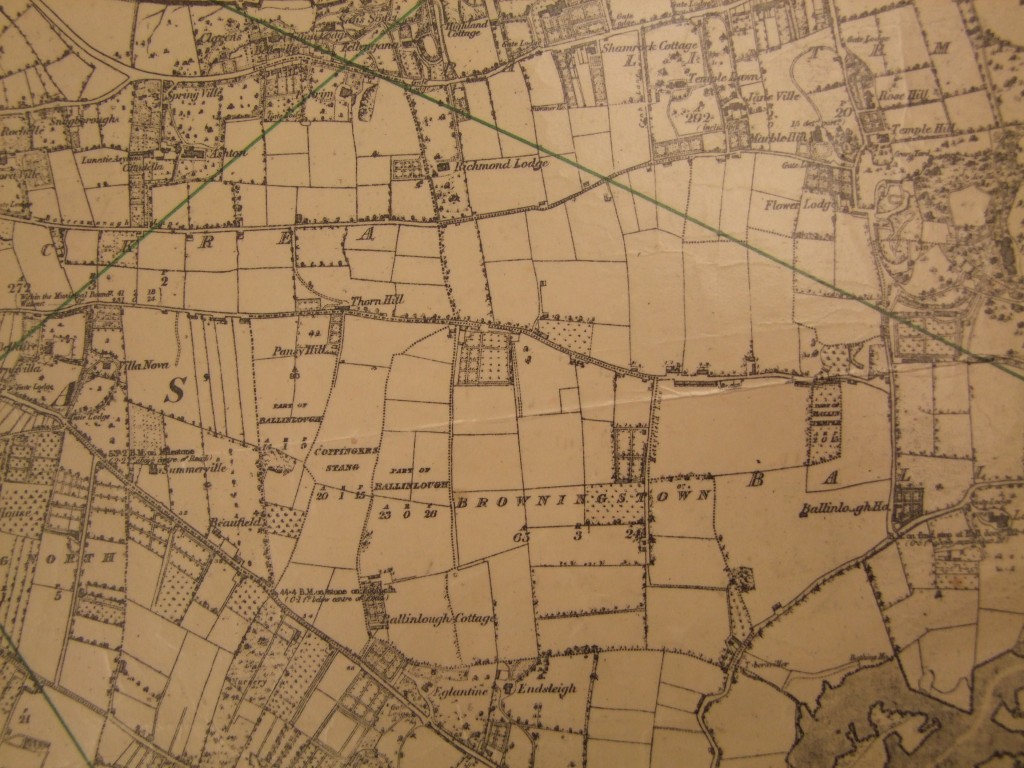
Ballinlough 2010
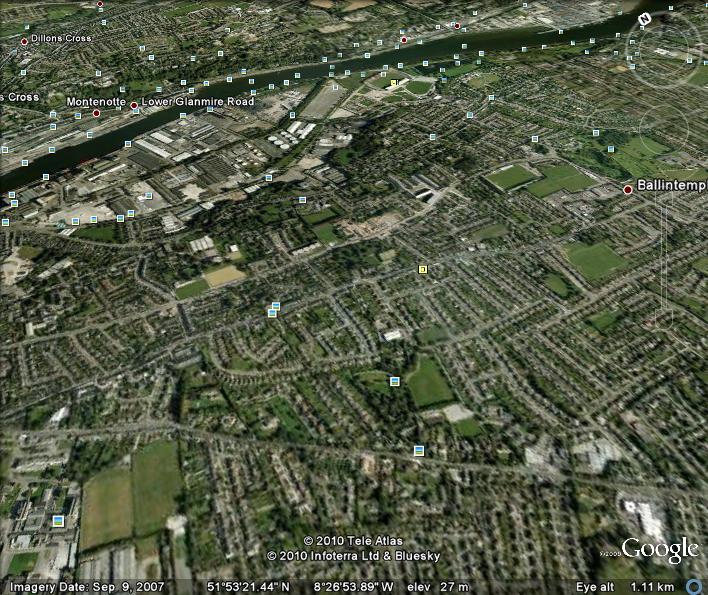

Kieran’s Our City, Our Town Article, Cork Independent,
19 August 2010
Kieran’s Heritage Week
National Heritage Week is upon us again next week (21st – 29th August). It’s going to be a busy week. I have set up a number of events. They are all free and I welcome any public support for the activities outlined below:
Sunday, 22 August, 2pm, “Heritage Treasure Hunt”, A family and fun activity; start point: outside Cork City Library, Grand Parade, Cork, Duration: 1 ¼ hours
This is a family activity, which leads participants into the heart of old Cork looking for clues. This year the focus is on South Parish area, Clues will be found in the heart of Douglas Street to St. Finbarre’s Cathedral. The trail is a hands on activity that requires looking up and around at Cork’s built heritage.
Monday, 23 August, 7pm; “Knights, Quarries and Suburban Growth: A historical walking tour through Ballinlough and environs”, start point: Ballinlough Pitch and Putt car park, opp. Pairc Ui Rinn, Cork, duration: 1 ½ hours
With 360 acres, Ballinlough is the second largest of the seven townlands forming the Mahon Peninsula. This October, Our Lady of Lourdes Church in Ballinlough celebrates 75 years since the laying of its foundation stone. However, the area has a deeper history dating back to Bronze Age Ireland. In fact it is probably the only urban area in the country to still have a standing stone still standing in it for over 5,000 years. My walk will highlight this heritage along with tales of landlords, big houses, rural life in nineteenth century Ballinlough and the development of its twentieth century suburban history.
Tuesday, 24 August, 11am; lecture entitled ‘The southern suburbs: a history of Ballyphehane and Turners Cross”, Tory Top Library, Ballyphehane, duration: 1 hour
By the mid 1920’s, the South Parish of Cork City had grown in both population and area to a point where it could no longer function with a single church. In an effort to address the situation, the bishop of Cork, Rev. Daniel Cohalan D.D designated Turners Cross as the location for a second parish church to serve the ever growing congregation. One of the key features of the area is the iconic church created by architect Barry Byrne and sculptor John Storrs, the Church of Christ The King. The talk takes this church and other important historical gems of the area as its focus. The talk also addresses aspects of Ballyphehane as one of the oldest suburbs in Cork created as part of a post-World War II initiative to create a model community in Cork.
Tuesday, 24 August, 7.30pm; lecture entitled: “Tales of Theatre and the Arts in Cork’s History”; Civic Trust House, Pope’s Quay, Cork, duration: 1 hour
As a city on the very edge of Western Europe, Cork has grown due to an anthology of influences. As a port city, Cork has always been open to influences, both geographically and culturally, to Europe and the World. As Corkonians, we have a large range of strong cultural traditions from the city’s history to GAA, festivals, literature, art and to the rich Cork accent itself. We can be very proud of the city’s achievements through time. The activity of Cork’s artists, musicians, writers, poets and players is evident on our streets, in our galleries and on our stages. In this light, the central theme of this talk is to explore is the development of theatre in the city in the eighteenth and nineteenth centuries.
Friday 25 August, 9-5pm, Kieran’s Lee Valley photographic exhibition for Water Heritage Day at the Lifetime Lab, Lee Road Cork (www.lifetimelab.ie)
Photography also has the ability to stop the viewer, to impress and make the viewer question, wonder, dream, remember, disturb, explore and not forget – promoting a reaction. With all that in mind, my photographic exhibition attempts to capture the many moods and colours of the River Lee Valley, the characters who have interacted with it, the major events and the minor common happenings to construct a rich and vivid mosaic of life by and on the water.
Saturday, 29 August, 1.30pm; History and Legacy: A historical walking tour through Cork City Hall, start point: City Hall, Anglesea Street entrance, required booking in advance with heritage office, Cork City Hall, 021 4924018, duration: 1 hour
One of the most splendid buildings of Cork is Cork City Hall. The limestone structure replaced the old City Hall, destroyed by British troops on 11 December 1920. The foundation stone of the new City Hall, which was build at the same place as the old building, was laid by the Executive Council of the State, Mr. Eamonn de Valera, on 9 July 1932. In March 1935 the first staff members of a few departments of the city administration moved into the western wing of the building. The first council meeting was held in City Hall on the 24th April 1935. Celebrating its 75th anniversary next year, the building was officially opened by the Irish President on 8th September 1936.
Further information on any of the above, contact Cllr Kieran McCarthy, 0876553389, www.corkheritage.ie. Also check out the overall the Cork heritage week brochure, available from Cork City Libraries.
Captions:
553a. Red coat re-enactors at the recent Cork Military Show in Cork City Gaol Heritage Centre, August 2010 (pictures: Kieran McCarthy)
553b. Beautiful design work on pulpit in St Finbarre’s Cathedral, open on Cork Heritage Open Day, Saturday 28 August 2010 (www.corkheritageopenday.ie)
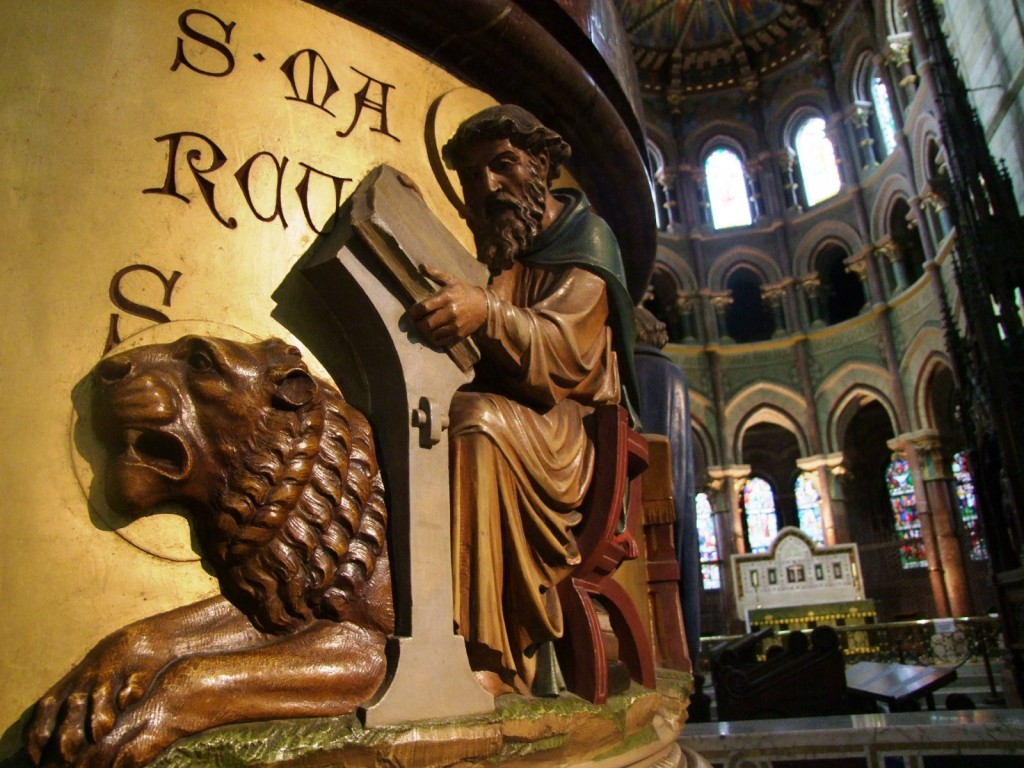
I can’t believe it’s the end of the summer already! But Ballinlough proudly presents its ‘End of Summer Festival’. It was great last year. There is a great team organising it, who are very determined to bring out the community not only to get together but also to showcase what a group can do (harnessing a whole series of interests and talents). I love the programme they have planned; something for everyone – so come along, show your face, support, have a bit of banter, chat, a laugh and fun. It’s good for the soul!

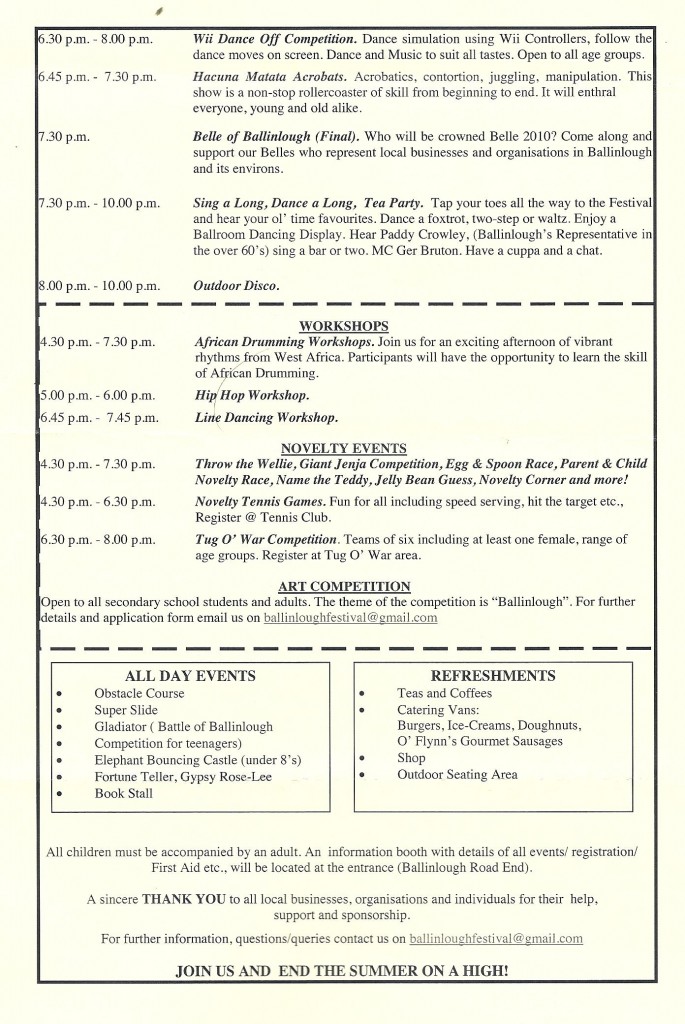
National Heritage Week, is coordinated by the Heritage Council and runs from 21st – 29th August. Cllr. Kieran McCarthy invites the general public to the following projects he is running for this important week.
Sunday, 22 August, 2pm, “Heritage Treasure Hunt”, A family and fun activity; start point: outside Cork City Library, Grand Parade, Cork, Duration: 1 ¼ hours
Monday, 23 August, 7pm; “Knights, Quarries and Suburban Growth: A historical walking tour through Ballinlough and environs”, start point: Ballinlough Pitch and Putt car park, opp. Pairc Ui Rinn, Cork, duration: 1 ½ hours
Tuesday, 24 August, 11am; lecture entitled ‘The southern suburbs: a history of Ballyphehane and Turners Cross”, Tory Top Library, Ballyphehane, duration: 1 hour
Tuesday, 24 August, 7.30pm; lecture entitled: “Tales of Theatre and the Arts in Cork’s History”; Civic Trust House, Pope’s Quay, Cork, duration: 1 hour
Friday 25 August, 9-5pm, Kieran’s Lee Valley photographic exhibition for Water Heritage Day at the Lifetime Lab, Lee Road Cork (www.lifetimelab.ie)
Saturday, 29 August, 1.30pm; History and Legacy: A historical walking tour through Cork City Hall, start point: City Hall, Anglesea Street entrance, required booking in advance with heritage office, Cork City Hall, 021 4924018, duration: 1 hour
Further information on any of the above, contact Cllr Kieran McCarthy, 0876553389, www.corkheritage.ie
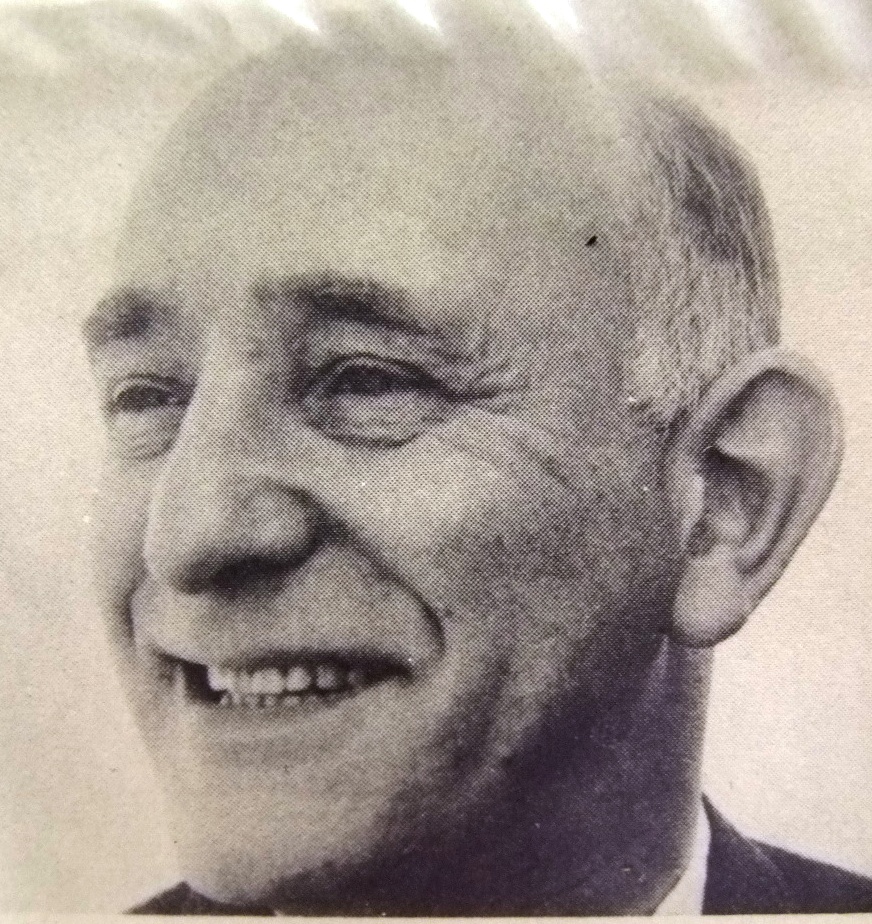
Kieran’s Our City, Our Town, Cork Independent,
12 August 2010
Politics and Literary Treasures
Gerald Goldberg had a long career with enormous and varied interests in politics and culture. The numerous articles and books collected in Cork City Library pertaining to his work reveal a passionate and energetic man, not afraid to comment on the importance of the arts in building Ireland’s identity but also speaking out against atrocity.
In 1967, Gerald, who had built up a successful legal practice as a criminal lawyer, entered local politics running as an Independent councillor candidate in the south east ward of Cork City. Securing a seat, he spent seven years as an Independent before joining Fianna Fáil, argued as an attempt to be in the running of being Lord Mayor. Cork Corporation elected him Lord Mayor in 1977. During his speech, the new Lord Mayor spoke in Irish and then in Hebrew. He said he was a Corkman born and bred and was proud of his city and people. During his year as Lord Mayor of Cork in 1977, he received death threats which he blamed on unbalanced media reporting on the Israeli army’s invasion of Lebanon in 1982 and the death of two Irish peacekeeping soldiers there. As a result he considered leaving Ireland. The synagogue in Cork was fire-bombed at the time. Israel’s relations with Ireland were strained for many years because of the issue of Irish peacekeepers being injured or killed while serving in Lebanon. Protests, appeals and anti-semitic comments/abusive phone calls were often received during those years by Jewish community offices.
Gerald had an acute interest in the arts. When he was a student, he began a collection of gramophone recordings of rare and classical music. In time he was a governor of the National Gallery of Ireland, a member of the Irish Contemporary Art Society and of the Irish Graphic Society. He had a keen interest in history especially local history of Cork and published a number of books including The Adventurers of Cork; A History of the Jews of Cork and Johnathan Swift and contemporary Cork. He also contributed the article on the Jews of Ireland in the Encyclopedia of Ireland and a chapter on Cork to the History of the Jews in Ireland. In his book on Jonathan Swift, he noted his interest in biblical archaeology, the study of the Old and New Testaments, English and European literature, the collection of oil paintings, drawings, sculptures, rare books and first editions.
In the Cork Review of 1993 (republished by Cork City Library in 2008), Gerald, in an introduction to the work of his nephew David Marcus, writes about the needs for personal expression. David, himself, was a writer of novels and short stories and an editor of numerous anthologies of Irish fiction and poetry such as the Phoenix Irish Short Stories collections. From 1946, he was a long serving editor of “New Irish Writing” in the Irish Press. He co-founded the page with Terence Smith and they edited it to 1957. Gerald in his reminisces writes about Terence as sitting next to him at school at Presentation College on the Mardyke and in time providing a strong influence in Gerald’s appreciation of English literature. The New Writing page provided a forum for aspiring Irish authors, publishing most of the most important names in Irish fiction, many for the first time, including Dermot Bolger, Ita Daly (whom David Marcus married), Anne Enright, Neil Jordan, Claire Keegan, John McGahern, Joseph O’Connor and Colm Tóibín.
The Irish Press was controlled by Eamonn de Valera and his family and aimed to express the ‘national outlook’ of the thoughts and sentiments of his party supporters and the process of modernisation. The Irish Press was aimed particularly at teachers and schools with strong GAA games and the promotion of the Irish language. Seán Lemass was an early managing director. Shareholders came from both Ireland and the United States.
David’s novel A Land Not Theirs (1968), a fictionalized account of the experiences of the Cork Jewish community during the Irish War of Independence, was a bestseller. In 1986 his second novel, which drew on his experiences among the Cork Jewish community, A Land in Flames was also a popular success. In 2001 Marcus published Oughtobiography – Leaves from the Diary of a Hyphenated Jew, an autobiographical review of his life as an Irish-Jewish person and as a figure in the field of Irish literature. On 3 June, 2005, he was awarded an honorary Degree of Doctor of Literature by the National University of Ireland, University College, Cork.
Such family connections and the positive mindset of creating opportunities for people and developing their talents seem to drive Gerald Goldberg’s values. His passion for collecting antiques was highlighted by the auction of his collection in 2004 consisting of pictures, bronzes, antique furniture, silver, porcelain and glass. As a patron to the arts he was deeply involved with the Cork Orchestral Society, Irish Theatre ballet and the lunchtime concerts in the Crawford College of Art and Design. Trawling through his work Gerard Goldberg has left many legacies but of the most important is perhaps the idea that building ideas and subsequent realities are very important in pushing a city’s identity forward whether that be in politics or the arts.
To be continued…
Captions:
Gerald Goldberg, late 1970s (source: portrait in his book, Jonathan Swift and Contemporary Cork)
David Marcus, writer and editor, nephew of Gerard Goldberg (source: The Lost Soul of the World, reprinted in 2008 by Cork City Library)
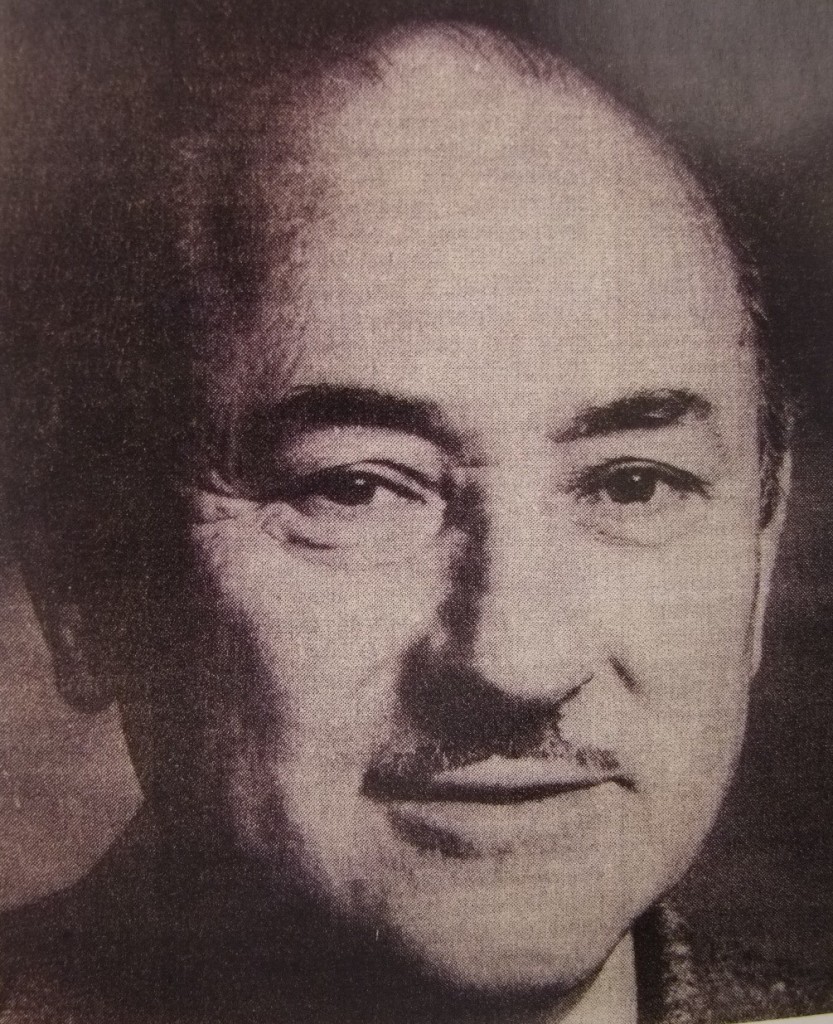
National Heritage Week, is coordinated by the Heritage Council and runs from 21st – 29th August. Cllr. Kieran McCarthy invites the general public to the following projects he is running for this important week.
Sunday, 22 August, 2pm, “Heritage Treasure Hunt”, A family and fun activity; start point: outside Cork City Library, Grand Parade, Cork, Duration: 1 ¼ hours
Monday, 23 August, 7pm; “Knights, Quarries and Suburban Growth: A historical walking tour through Ballinlough and environs”, start point: Ballinlough Pitch and Putt car park, opp. Pairc Ui Rinn, Cork, duration: 1 ½ hours
Tuesday, 24 August, 11am; lecture entitled ‘The southern suburbs: a history of Ballyphehane and Turners Cross”, Tory Top Library, Ballyphehane, duration: 1 hour
Tuesday, 24 August, 7.30pm; lecture entitled: “Tales of Theatre and the Arts in Cork’s History”; Civic Trust House, Pope’s Quay, Cork, duration: 1 hour
Friday 25 August, 9-5pm, Kieran’s Lee Valley photographic exhibition for Water Heritage Day at the Lifetime Lab, Lee Road Cork (www.lifetimelab.ie)
Saturday, 29 August, 1.30pm; History and Legacy: A historical walking tour through Cork City Hall, start point: City Hall, Anglesea Street entrance, required booking in advance with heritage office, Cork City Hall, 021 4924018, duration: 1 hour
Further information on any of the above, contact Cllr Kieran McCarthy, 0876553389, www.corkheritage.ie
Unveiling of Chernobyl mural at Mahon Comunity Centre, 3 August 2010


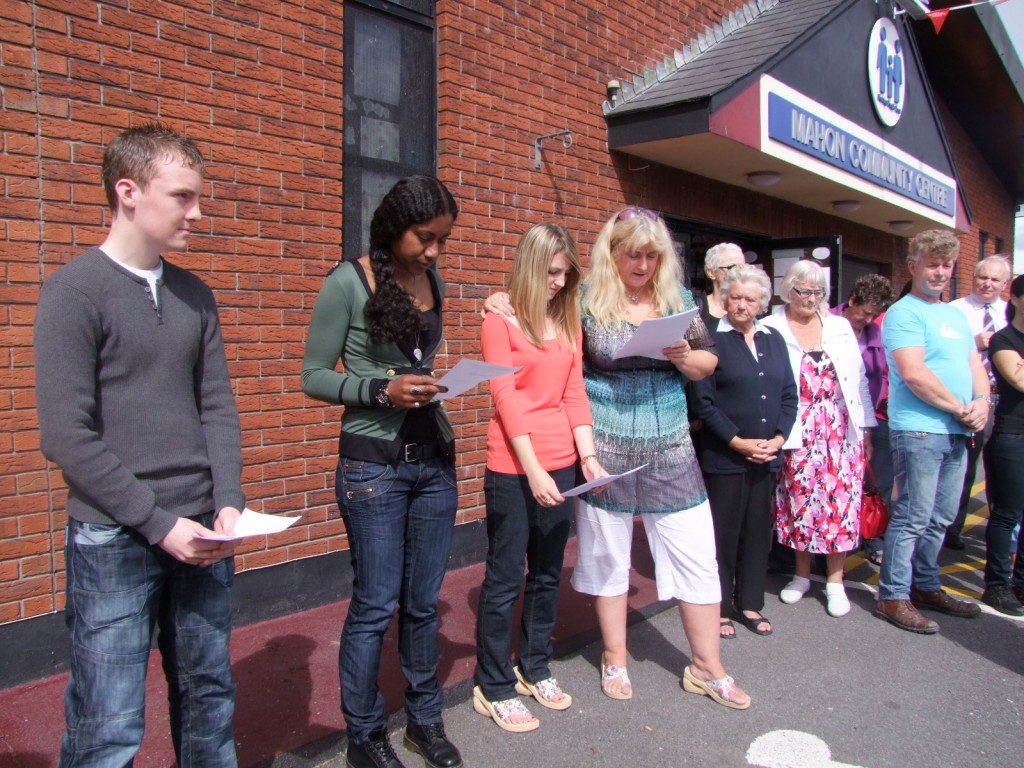

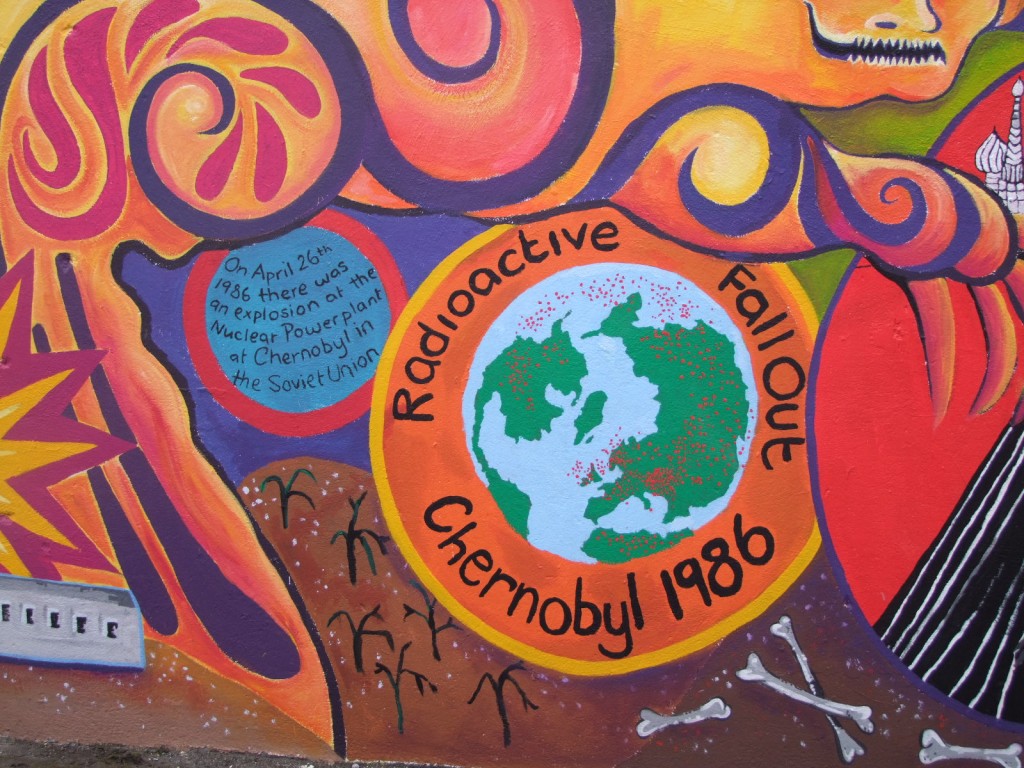
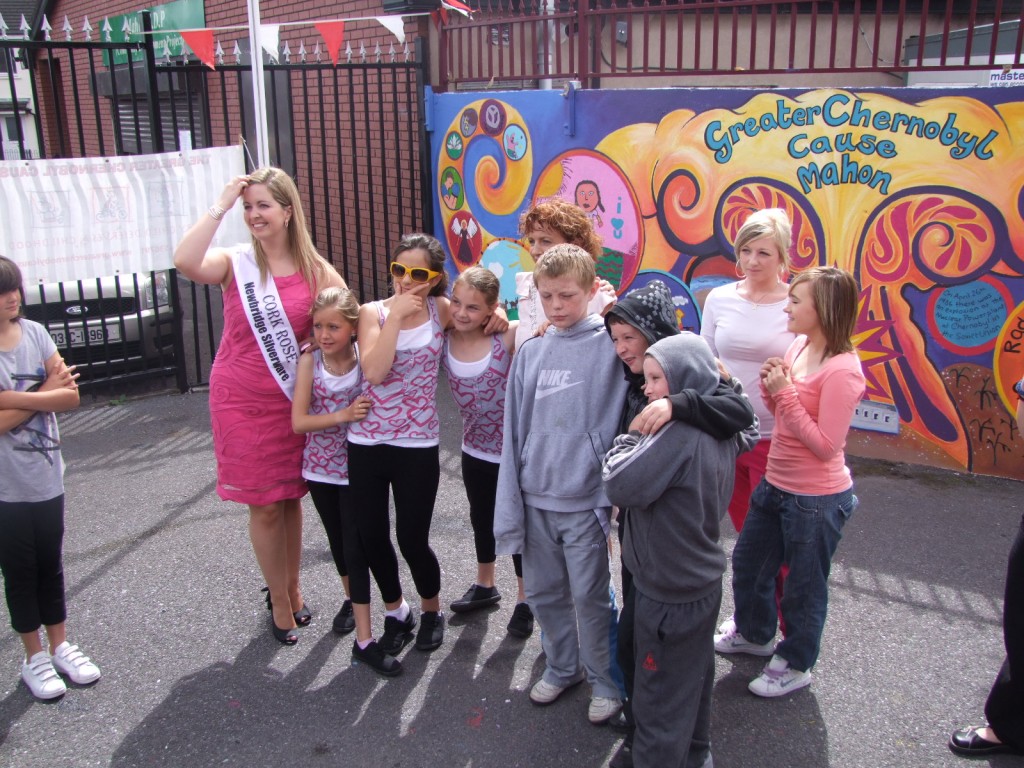

Kieran’s Our City, Our Town, Cork Independent,
5 August 2010
Tangents and Cultural Encounters
According to the insitu history panel, in 1887, the first Jewish burial took place in Currykippane and as the community grew in numbers over 300 graves were filled. The southern portion, called The Old Cemetery, was over time filled to capacity, limited by the Jewish religious law of having one grave for one person. The Old Jewish Cemetery is also the last resting place for some passengers from the ill-fated RMS Lusitania disaster. On 7 May, 1915 the liner was en route from New York to Liverpool when it was struck by a torpedo, 8 miles off the Old Head of Kinsale, Cork.
On 17 March 1949 a further large area was consecrated at Currykippane with the anticipation that the strong growth of numbers to the Jewish Community in Cork would continue. However, by the 1990’s it was realised that a vast proportion of the area would not be required, due to a fall in Jewish population through emigration. The Trustees of the Cork Hebrew Congregation offered the surplus ground to Cork County Council for development of St. Mary’s Cemetery. In exchange the remaining section of the Jewish Cemetery was redeveloped and opened by the Chief Rabbi of Ireland, Dr. Yaacov Pearlman in 2007.
One of the country’s intellectual and cultural figures of the twentieth century, Gerald Goldberg’s is buried in the new Jewish plot at Currykippane. His obituary in the Irish Times and Irish Examiner respectively from early January 2004 reveal a man who distinguished himself in the law, as a scholar of history and literature, as a patron of the arts, as a public representative and Lord Mayor of Cork city. Gerald Yael Goldberg was born in Cork on 12 April 1912 (two days before the sinking of the Titanic). His father, Louis, was a Lithuanian Jew from Akmene (www.akmene.lt) in the north of the country who escaped from a podgrom in Russia in 1882 and landed in Ireland. He was at first sheltered by relatives who had settled in Limerick. In 1881 there were thirty-five families in Limerick which rose to 130 in 1896.
Louis Goldberg married Rachel Sandlers who belonged to a Jewish family from Akmene in Cork, settled there since 1875. Louis earned his living as a peddlar as did many of the Jews in Ireland at that time. Louis was forced out of Limerick following the anti-Semitic rioting there in 1904 during which he was assaulted. The boycott in Limerick in the first decade of the twentieth century is known as the Limerick Pogrom, and caused many Jews to leave the city. It was instigated by an influential intolerant Catholic priest. A teenager, John Raleigh, was arrested by the British and briefly imprisoned for attacking the Jews’ rebbe, but returned home to a welcoming throng. Limerick’s Jews fled. Many went to Cork, where trans-Atlantic passenger ships docked at Cobh brought them to America.
Re-settling at Anglesea Street Cork, Louis and Rachel had a family of 13. Gerald was the third youngest and was educated in Christ Church Protestant national school and then at the Model School, Anglesea Street. As a boy, he remembered the burning of Cork by the Black and Tans especially as his family had to be evacuated from their home. When Thomas McCurtain, Lord Mayor of Cork, was shot in 1920, his body lay in state afterwards. Amongst the thousands of mourners who filed past his coffin as a small boy of eight was that of Gerald Goldberg. The family eventually moved to no. 10 Parnell Place.
Gerald was sent for a time to a Jewish boarding school in Sussex, England before returning to Cork where he attended the Presentation Brothers College. It was thanks to the principal of the Presentation Brothers, Brother Edward Connolly that Gerald Goldberg got a start in the legal firm of Barry Galvin. He qualified as a solicitor in 1934 after studying in University College Cork. After qualifying as a solicitor in 1934, Goldberg had a career in Criminal Law practice in Cork for 63 years. He was the first Jewish President of the Incorporated Law Society of Ireland. In 1937, he married Sheila Smith, who was a member of a well-known Jewish family in Belfast.
The Nazi persecution of Jews in Germany in the 1930s prompted Gerald as a young solicitor to set up a committee to assist Jews fleeing Nazi persecution to have refuge in Ireland. The original Irish Constitution of 1937 specifically gave constitutional protection to Jews. This was considered to be a necessary component to the constitution by Eamonn De Valera because of the treatment of Jews elsewhere in Europe at the time. Despite the constitution, Gerald Goldberg encountered resistance from various arms of the Irish Government. Some individuals were determined to discourage Jewish immigration for reasons of neutrality and argued that the country was unable to provide subsistence for refugees at that time. It is estimated that Ireland accepted as few as 30 Jewish refugees before and during World War II. A successful applicant in 1938 was typically wealthy, middle-aged or elderly, single from Austria, Roman Catholic and desiring to retire in peace to Ireland and not engage in employment.
To be continued…
Captions:
551a. Gerald Goldberg, Lord Mayor of Cork as represented by a portrait by David Goldberg, in Cork Corporation’s diary for 1978 (source: Cork City Library)
551b. Lord Mayor, Cllr Gerald Goldberg with former Taoiseach, Jack Lynch and Second Officer T. O’Leary at the centenary celebration 1977 of Cork Fire Brigade (source: Cork Corporation Diary, 1978)
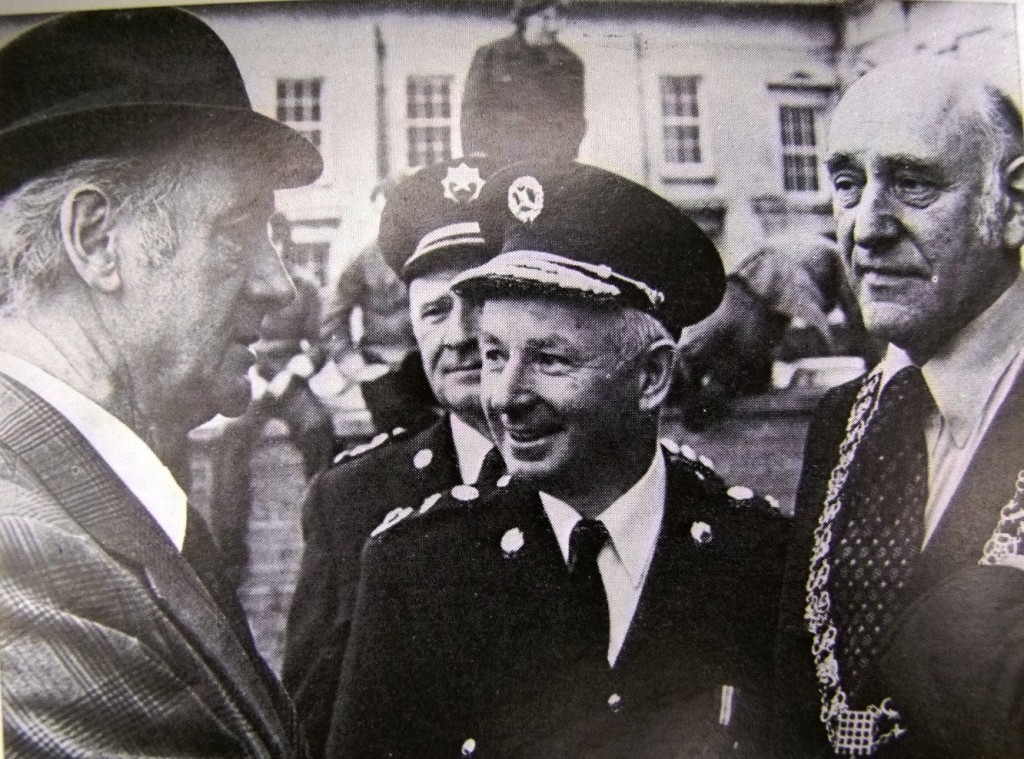
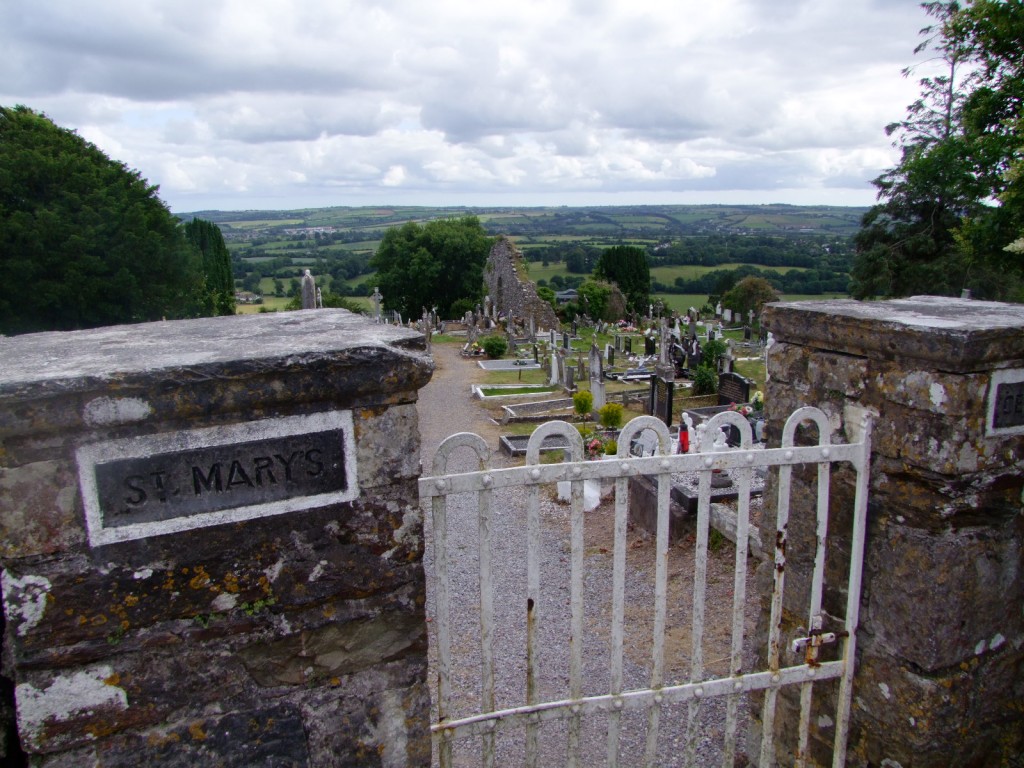
From Russia with Hope
Of all the graveyards I have passed through in the Lee Valley, Currykippane is one where humanity teems from it. The multiple signs or love and affection for loved ones stand out in this cemetery. Couple that with its location overlooking the river’s entrance to Cork City and views eastwards along the valley and south to the lush fields makes this an enormous site of memory.
As well as individual and family plots, there is a large famine burial pit in the eastern part of the graveyard. There is a plot for students of UCC and a plot where many of the burials are 1950s. However, I was unable to ascertain who the plot represents (any answers to Kieran?).Outside the south eastern corner a Jewish burial ground can be seen.
According to UCC historians, Dermot Keogh and Diarmuid Whelan in their tribute to Gerald Goldberg, the Jewish community in Cork have had a presence in Cork since at least the early eighteenth century. The first wave of Jewish emigration to Cork was in 1772 with the influx of a small community of Sephardic Jews from Portugal. Relatively little is known about this first community. Although they did not have a synagogue, a burial ground was discovered at Kemp Street, to the back of the present synagogue on number 10, South Terrace, Cork City.
Geraldine Healy in research in the Northside Folklore Project’s The Archive reports that in Cork records for 1801, Isaac Solomon was one of the few Jews in Cork as the new century opened. He traded as a silversmith and jeweller, on St. Patrick’s Street, specialising in small items, such as spoons and cream jugs. There was a Solomon Hymes (Hyams) umbrella maker, working in Blackpool, in the year 1810. His son carried on the family business in 1845 and transferred the business in 1870 to 64 North Main Street.
There was an increase in Jewish immigration to Ireland during the late nineteenth and early twentieth centuries. In 1871, the Jewish population of Ireland was 258. By 1881, it had risen to 453. Most of the immigration up to this time had come from England or Germany. In the wake of the Russian pogroms there was increased immigration, mostly from Eastern Europe (in particular Lithuania). The pogroms of the 1880s took place during the period of unrest which prevailed in Russia after the assassination of Czar Alexander II by members of the revolutionary organization Narodnaya Volya on March 13, 1881. Anti-Jewish circles spread a rumour that the czar had been assassinated by Jews and that the government had authorized attacks on them. The pogroms at first also received the support of some revolutionary circles, who regarded this action as a preliminary awakening of the masses which would lead to the elimination of the existing regime. The Jews of Russia were the victims of three large-scale waves of pogroms. These occurred between the years 1881 and 1884, 1903 and 1906, and 1917 and 1921.
By 1901, there were an estimated 3,771 Jews in Ireland, over half of them residing in Dublin. By 1904, the total Jewish population had reached an estimated 4,800. New synagogues and schools were established to cater for the immigrants, many of whom established shops and other businesses. Many of the following generations became prominent in business, academic, political and sporting circles.
Circa 2,000 Jewish people arrived in Ireland between the years 1880 and1910. Many were of Lithuanian origin from districts such as Vilna and Kovno and Ackmeyan. A revived congregation in Cork was formed at the close of 1881 and Meyer Elyan of Zagger, Lithuania was appointed Shocket, Reader and Mothel. The community had close links with those of Dublin and Limerick. The initial group of Jews worked mostly as peddlers, selling door-to-door. They were known, amongst each other, as the vicklemen (vickle means weekly in Yiddish, and their door-to-door rounds took roughly a week). They would travel around Cork City and its hinterland knocking on doors and selling various things to the local Catholic farming community.
Several of the earliest arrivals from a cluster of shtetls in north-western Lithuania settled in a group of recently constructed dwellings called Hibernian Buildings, Monarea Terrace and Eastville off the Albert Road, c.1880. Much of the streetscape is as it was more than a century ago when the first Litvaks arrived. Hibernian Buildings, built by the O’Flynn Brothers who were based in Blackpool, was a triangular development of a hundred or so compact and yellow brick on street dwellings. Each unit consisted of four rooms, including a bedroom up in the roof. Seventy Jews prayed in a room in Eastville. About the year 1884, a room was rented in Marlborough Street from the Cork Branch of the National League. A synagogue was fitted up in the offices there. Premises were finally acquired at 24 South Terrace. The number of Jews in the city and county combined rose from twenty-six in the year 1881 to 217 in the year 1891. The Cork Jewish Community acquired the ground for the Jewish Cemetery in Currykippane in 1885 to serve the growing immigrant community.
To be continued…
Captions:
550a. St. Mary’s Cemetery, Currykippane, July 2010 (pictures: Kieran McCarthy)
550b. Hibernian Buildings, Albert Road, Cork
